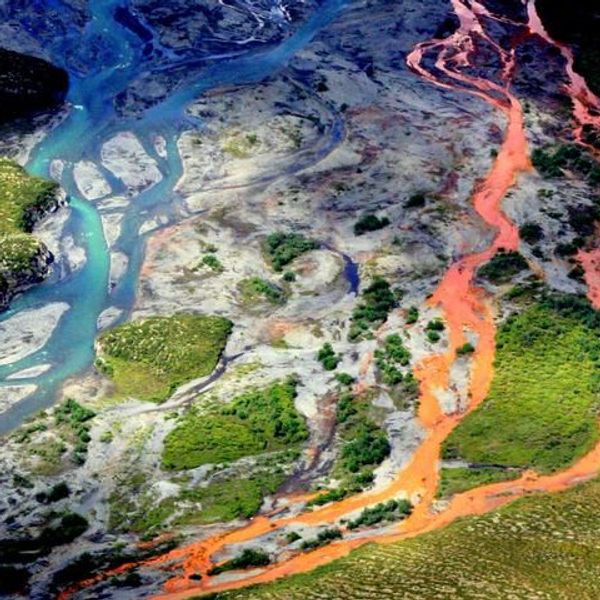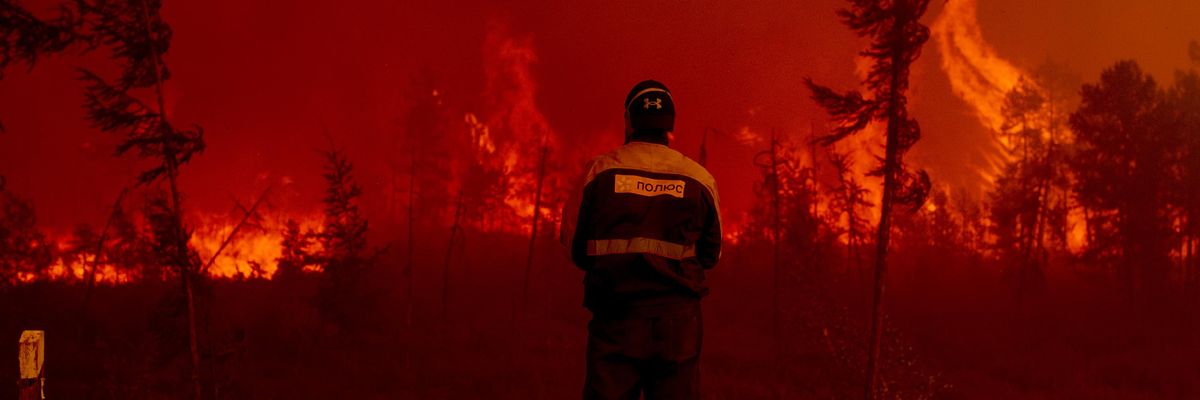The world's top climate scientists just delivered their rescue plan for humanity, directly to our governments. The Working Group III Report contribution to Sixth Assessment Report from the Intergovernmental Panel on Climate Change (IPCC) focuses on how to reduce further warming and follows the first two reports of the assessment, on the physical science and climate change impacts. It's a thick report on climate solutions that can and must be put into action right now.
And here's where you and I come in: we need to make sure this report is not shelved. It needs to be talked about in every corner of the world, and most importantly: acted on.
The starting point you already know: the climate action our governments and the financial sector have taken by now keeps being too little too late, and we need much, much more, and fast. Not a single country is yet doing enough. And it's a critical decade when we make or break this.
So then, what is the action needed right now? Here are our 6 takeaways from the IPCC report on mitigation that we think you should know:
1. We have the solutions we need to limit warming to 1.5degC!
This is the best news: we have the solutions to slash more than half of global emissions in just eight years, and to continue from there towards net zero emissions, as is needed to meet the Paris Agreement goal of limiting warming to 1.5degC. In this critical decade by 2030, the biggest contributions to net emission reductions would come from solar and wind energy, conservation and restoration of forests and other natural ecosystems, climate-friendly agriculture and food, and energy efficiency. More than half the potential by 2030 comes with low costs (below 20 USD/tonne) or even negative costs! Costs below zero means that investing in solutions, like solar and wind, will bring cost savings compared to continuing current ways.
2. We can get much more with less.
By 2050, huge potential exists, overall, in demand-side strategies that could cut emissions by 40-70% compared to current policies. This means designing and repurposing infrastructure, advancing technology adoption and enhancing socio-cultural factors that enable and reward sustainable ways of life from walkable and bikeable cities and shared and electrified mobility to self-sustaining homes, healthy plant-based diets, avoided flights, and to consumption requiring less material input as we reuse, repair and improve recycling. Rather than leaving it to individuals and their choices, we need systems approaches that advance climate-friendly choices for all, while prioritising the rights and needs of those who are yet to reap the benefits of development. The poorest quarter of the population worldwide lack decent homes, mobility and food and will need additional energy, capacity and resources for human wellbeing.
3. Money needs to be redirected from problems to solutions.
To achieve the needed emission cuts, annual investment flows towards clean energy, efficiency, transport, agriculture and forests will need to increase at least 3-6 fold up to 2030. There is sufficient global capital and liquidity to close these investment gaps, but it's not heading the right way. As of today, more private and public money still flows to fossil fuels than to climate solutions, due to misaligned incentives both outside and within the financial sector. Removing fossil fuel subsidies could, alone, reduce emissions by up to 10% by 2030. Access to finance remains a big barrier especially for developing countries, and the promised levels of climate finance (100 billion USD/year) from developed countries have not been met.
4. Current national targets and policies are a recipe for failure and must fundamentally improve.
While many countries have improved their climate plans, not a single country is yet reducing emissions at a speed required by the 1.5degC goal. Misaligned policies lead to misaligned financial flows, into the fossil fuel economy, when in reality there's no room for any new fossil fuel infrastructure. There are already enough coal plants and other fossil fuel infrastructure in place to take us above 1.5degC, if allowed to be in full use until the end of their projected lifetime. Instead, global fossil fuel use needs to cease to about one tenth by 2050, if we are to follow a pathway that avoids overshooting 1.5degC and doesn't bet on sucking large amounts of extra carbon back from the atmosphere. Avoiding short-term action by relying on long-term plans that assume that somehow, somewhere, somebody will remove our emissions back from the atmosphere in large amounts, sometime in the future, is a risky plan. Such carbon dioxide removals, at the scale assumed by many pathways, are an uncharted territory and come with many uncertainties and risks. Some amount of carbon dioxide removal will be necessary, to compensate for those emissions that can't be avoided, but the need for it can be limited with urgent emission cuts.
5. Those with high emissions have higher potential and responsibility for emission cuts too
Households with income in the top 10% contribute about 36-45% of global emissions. Two thirds of them live in developed countries and one third in other economies. Those with high emissions have a higher potential for emissions reductions too, while maintaining good living standards and well-being. Equity and justice are, overall, essential considerations for effective climate policy and for securing national and international support for deep decarbonisation, given the differences in current and historical emissions contributions, degree of vulnerability and impacts, as well as capacities within and between nations. Accelerated international cooperation, including on finance, is a critical enabler of low-carbon and just transitions.
6. The seeds of transformative change have already been planted. Now it's all hands on deck.
Shifting to a sustainable future will require transformative changes that disrupt existing trends. It takes technological, systemic, and cultural changes, for which we need both consistent action from politicians and other decision makers, as well as public pressure and social movements.
That solar, wind and storage solutions have now made a disruptive breakthrough in costs, performance and adoption, much faster than anticipated by experts and earlier mitigation models, can be a gamechanger. Together these solutions could now, through electrification, start pushing fossil fuels out of the system in energy, transport, buildings and industry at a speed and scale once considered unthinkable, If enabled by further determined action. This breakthrough did not happen by a coincidence. It was driven by policy, innovation and public pressure for change (thanks to people like you!).
The challenges that need to be overcome, overall, are not small. Meeting the Paris Agreement goals would strand fossil fuel assets, with the economic impacts amounting to trillions of dollars. Hence, countries, businesses and individuals, who stand to lose wealth, may resist change. Therefore, ensuring the decision-making process is not unduly influenced by actors with much to lose is key to managing transformation.
Societal awareness and support for climate action have been on the rise. And so are cases of climate litigation against states, the private sector and financial institutions, as citizens are increasingly turning to courts to access justice and exercise their right to a healthy environment.
In just three years since 2017 the number of climate litigation cases nearly doubled. And the IPCC finds that "there is now increasing academic agreement that climate litigation has become a powerful force in climate governance."
So now, what's the plan?
These were some of our highlights from the IPCC report. But there's much, much more! And it's all highly recommended reading.
But then what?
It's a unique moment to be alive. Both the problems and the solutions are bigger than ever before. But so is the power of determined people who unite for change.
We have eight years to halve global emissions. And the decisions that either enable or prevent those emission cuts will be made much earlier.
We have already achieved one key milestone, with the breakthrough of solar and wind. Now we must up our game, big time, to push fossil fuels out of the way, to heal our food system, to protect our forests and land, and to fight for a future that meets the rights and needs of all rather than the greeds of the few.
This is the moment to rise up, be bold and think big. And there's a role to play for everyone.



